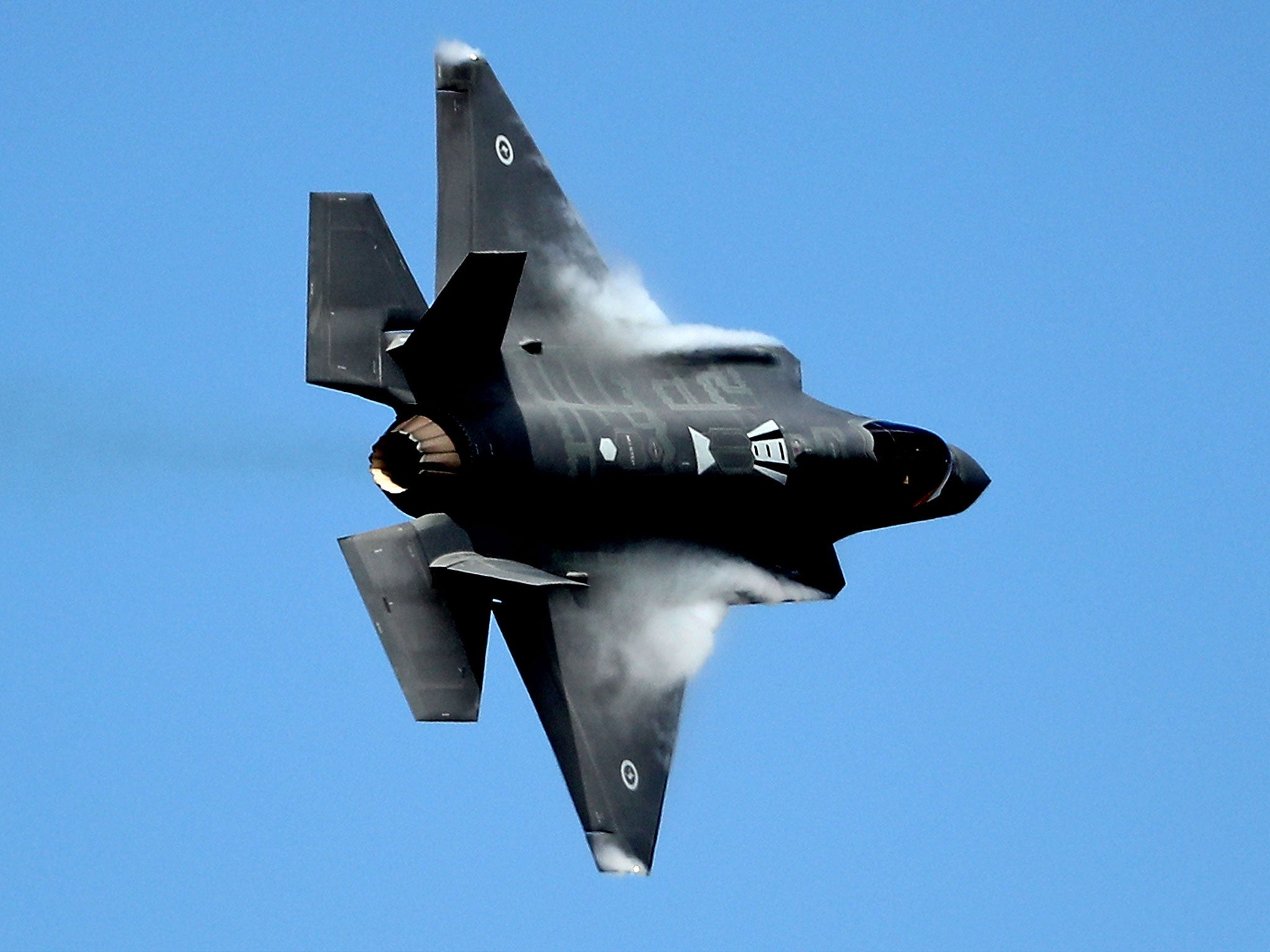Japanese F-35 stealth fighter jet crashes into Pacific in mysterious circumstances, pilot still missing
12 other high-tech aircraft at Misawa air base grounded by officials

Your support helps us to tell the story
From reproductive rights to climate change to Big Tech, The Independent is on the ground when the story is developing. Whether it's investigating the financials of Elon Musk's pro-Trump PAC or producing our latest documentary, 'The A Word', which shines a light on the American women fighting for reproductive rights, we know how important it is to parse out the facts from the messaging.
At such a critical moment in US history, we need reporters on the ground. Your donation allows us to keep sending journalists to speak to both sides of the story.
The Independent is trusted by Americans across the entire political spectrum. And unlike many other quality news outlets, we choose not to lock Americans out of our reporting and analysis with paywalls. We believe quality journalism should be available to everyone, paid for by those who can afford it.
Your support makes all the difference.A Japanese F-35 stealth fighter crashed into the Pacific ocean during a training exercise, the country’s defence ministry has said.
The high-tech jet’s pilot, aged in his 40s, is still missing after his aircraft disappeared from radar screens some 84 miles off the eastern coast of Aomori prefecture.
Wreckage was discovered late on Tuesday, Japan‘s air force said.
The F-35A went missing about half an hour after leaving the Misawa air base alongside three other jets for anti-fighter battle training, at 7.27pm local time.
Takeshi Iwaya, Japan’s defence minister, said the cause of the crash was unknown and that 12 other F-35As based at Misawa had been grounded.
The pilot had signalled he wanted to abort the mission before losing contact, he added.
The F-35 joint strike fighter programme has been plagued with delays and design setbacks over several years. Reports in US media claimed the jet had performed poorly in air-to-air combat tests.
It is among the largest and most expensive military acquisition schemes in history, funded mostly by the US with contributions from Nato allies the UK, Norway, Denmark, Italy, Australia, Canada, the Netherlands and Turkey.
According to some calculations, the programme was $163bn (£148bn) over budget by 2014 and seven years behind schedule, but manufacturers now claim the problems have been resolved.
Last October, the US was forced to ground its entire fleet of F-35s following a crash in South Carolina the month before. Investigations focused on faulty fuel tubes.
Japan began deploying the expensive supersonic F-35s last year as part of its plan to boost its defence spending and weapons capability to counter possible threats from China and North Korea.
Under guidelines approved in December, prime minister Shinzo Abe’s government plans to buy 147 F-35s, including 105 F-35As, costing about 10 billion yen (£69m) each.
The UK currently owns 17 F-35Bs, a short take-off and landing variant designed for use on aircraft carriers or smaller airfields.
Britain’s jets will eventually be paired with the Royal Navy‘s two Queen Elizabeth-class carriers, having begun trials at sea last autumn.
Defence secretary Gavin Williamson has pledged to buy some 138 of the jets for the Royal Air Force and Fleet Air Arm.
Additional reporting by AP
Join our commenting forum
Join thought-provoking conversations, follow other Independent readers and see their replies
Comments